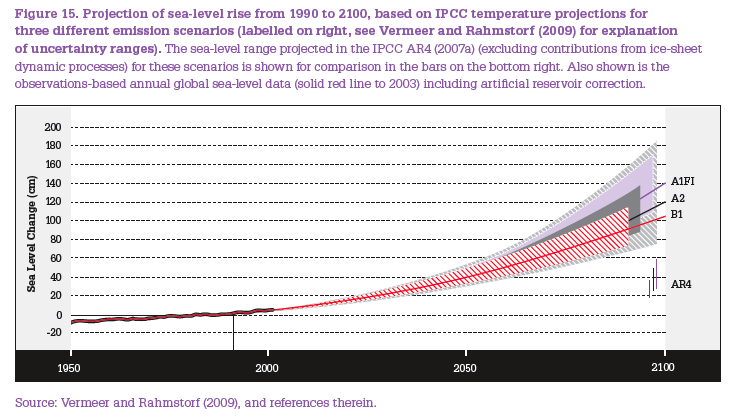
The Australian government established a Climate Commission which recently released a three chapter report entitled The Critical Decade. In Part 1, we examined Chapter 1 of the report, which summarizes the current state of climate science observational data. In this second part of the series, we will examine Chapter 2 of the report, which discusses the risks associated with a changing climate. The quotes and bullets below come directly from the report, while the remainder is our commentary.
Chapter 2 begins with an assessment of the risks associated with sea level rise:
The report discusses the fact that the IPCC Fourth Assessment Report (2007) did not take into account the loss of ice due to dynamical processes in the large polar ice sheets (on Greenland and Antarctica). Semi-empirical models (i.e. Vermeer and Rahmstorf 2009) project up to a 2 meter sea level rise by 2100 by incorporating the observed acceleration of sea level rise during the 1990–2009 period, although the report concludes that projections of 1.5–2.0 meter sea level rise by 2100 seem high in light of recent questions surrounding estimates of the current rate of mass loss from polar ice sheets (Bromwich and Nicolas 2010).

Looking specifically at Australia, a 0.5 meter sea level rise would greatly increase the incidence of extreme high sea-level events, particularly in Sydney and Melbourne:
"For coastal areas around Australia’s largest cities – Sydney and Melbourne – a rise of 0.5 m leads to very large increases in the incidence of extreme events, by factors of 1000 or 10,000 for some locations. A multiplying factor of 100 means that an extreme event with a current probability of occurrence of 1-in-100 – the so-called one-in-a-hundred-year event – would occur every year. A multiplication factor of 1000 implies that the one-in-a-hundred-year inundation event would occur almost every month."
In other words, even if sea level rise is at the very low end of projections, many coastal cities like Sydney will experience a high frequency of flood events.
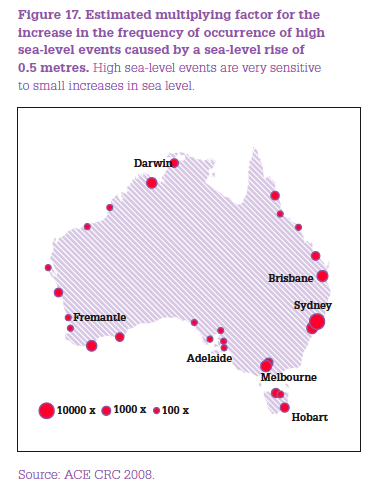
The report proceeds to examine the projected rate of change and impacts from ocean acidification:
Chapter 2 contains a rather striking figure of ocean pH over the past 25 million years and projected to 2100:
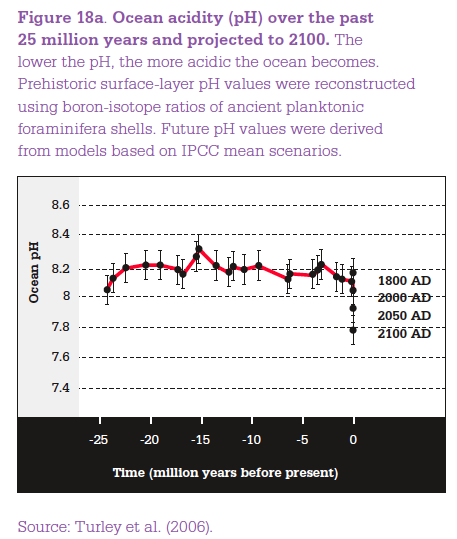
The impacts of increasing ocean acidity are already evident in some marine species, and there is evidence that acidification is already impacting the GBR and other coral reefs. If global temperatures rise more than 2°C above today's levels, it's anticipated that reefs will no longer be dominated by corals, as they will be adversely impacted by both acidification and rising ocean temperatures.
The next section of the chapter examines the risks associated with the water cycle, which are of particular concern to Australia, as the driest of the world's six inhabited continents.
In short, southwest Western Australia is likely to continue becoming very dry, but teasing out the impacts of global warming on the rest of the country's water supply is a challenge. In fact climate change could lead to more extremes in general, in both drought and rainfall in Australia. What the report does note is that once again, uncertainty is not our friend.
"This daunting uncertainty not only challenges attempts at adaptation, but also enhances, not diminishes, the imperative for rapid and vigorous global mitigation of greenhouse gas emissions."
The next section of Chapter 2 relates to extreme events such as heatwaves, bushfires, heavy precipitation events, and storms.
As we know, we can't attribute individual extreme weather events to climate change, but we can say that global warming is "loading the dice" and making these sorts of events more likely to happen. On average, heatwaves and bushfires are becoming more intense, for example, and will continue to do so as the planet continues to warm. It is also plausible that by increasing atmospheric water vapor, global warming will lead to more extreme rainfall and flood events, and the report concludes that we should prepare for this contingency.
The next section of Chapter 2 discusses abrupt, non-linear, irreversible changes in the climate system.
The report identifies a number of policy-relevant climate tipping elements throughout the world (click here for larger image) and examines the likelihood of passing some of these tipping points, and the risk associated with these scenarios:
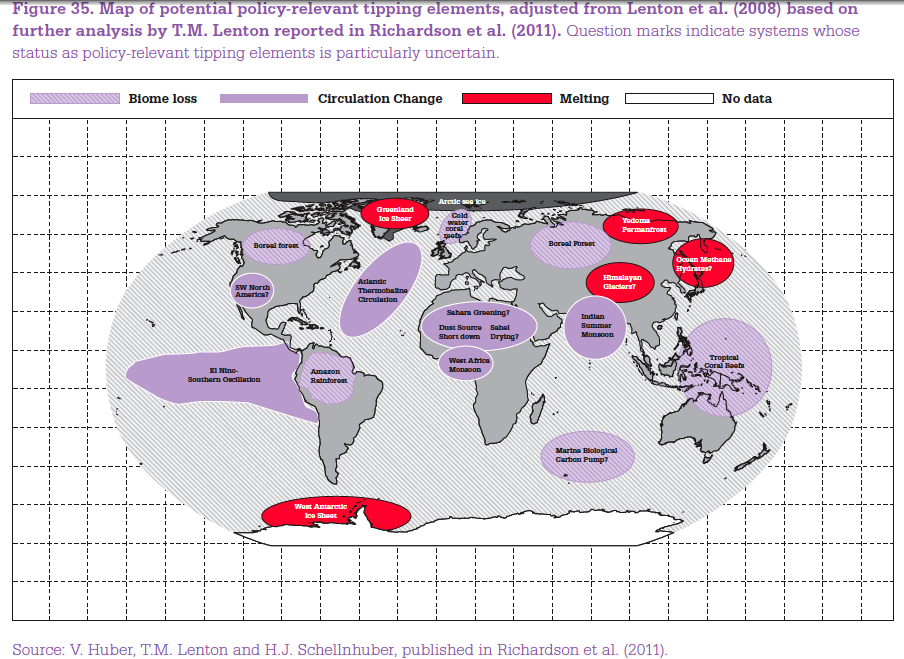
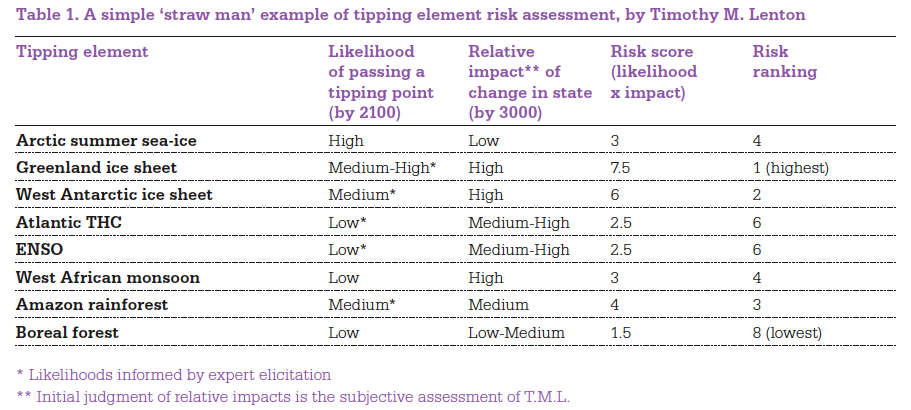
As you can see, the potentially rapid decline of the ice sheets and associated sea level rise represent the highest risk, followed by the loss of Amazon rainforest and Arctic sea ice.
In short, there are a lot of diverse risks associated with continued climate change. While there is a significant amount of uncertainty associated with some of these risks, we can't simply hope they won't happen or pretend the risks don't exist. Risk assessment and management involves taking all potential risks into account and determining the most effective way to reduce them. On that note, in Part 3 we will examine the report's conclusions regarding the science implications on future carbon emissions reductions.
Posted by dana1981 on Wednesday, 1 June, 2011
 |
The Skeptical Science website by Skeptical Science is licensed under a Creative Commons Attribution 3.0 Unported License. |